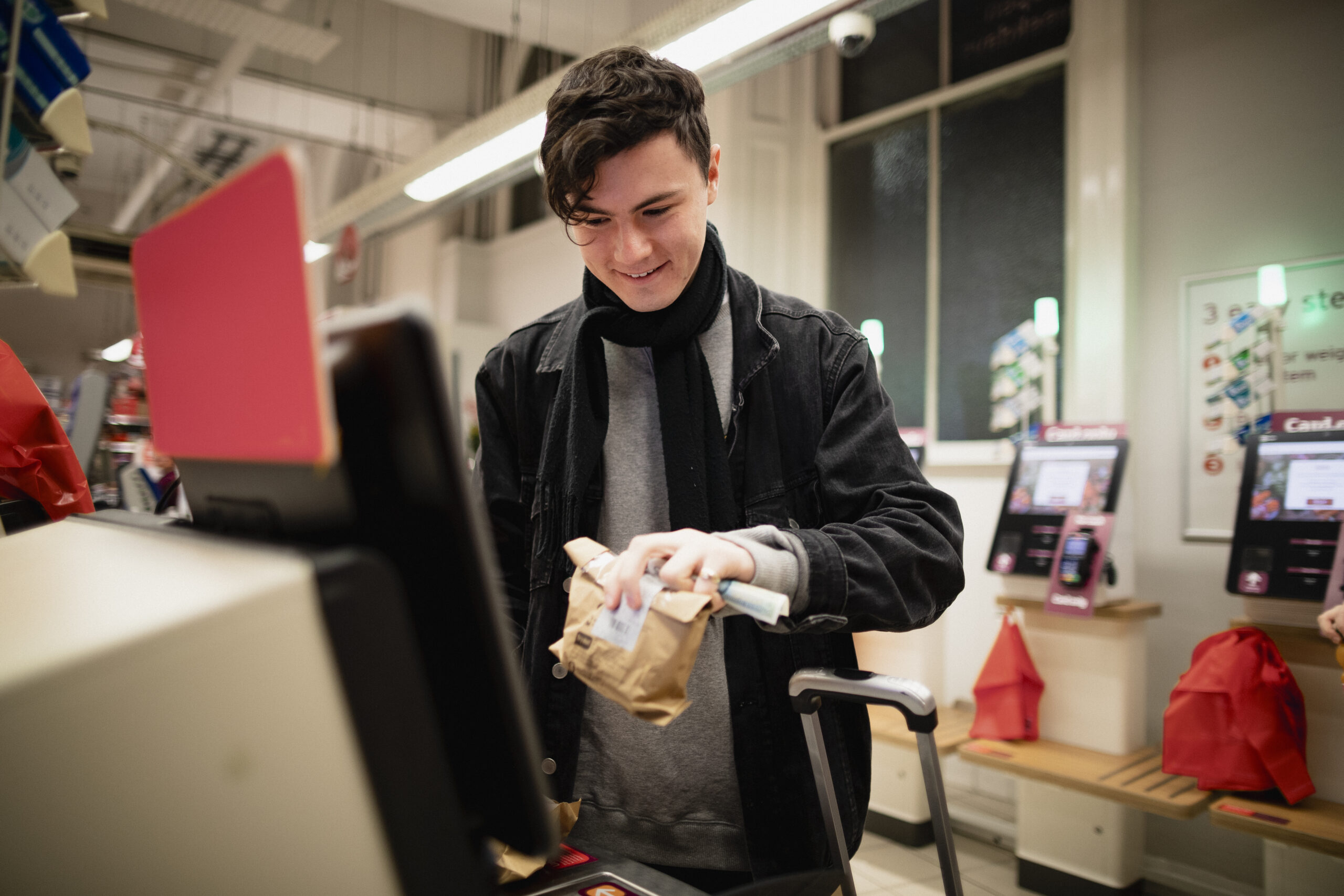At CLX, we work with the biggest and smartest retailers from around the world. We see the latest in innovation and technology that aims to improve the customer checkout experience.
We know customers want more options to checkout depending on what they are buying, the size of their shop, and the time of the day.
To achieve optimal customer experiences and operational efficiencies, retailers need to invest in a “balanced front end ecosystem”.
With the right mix of checkout solutions, varying customer needs and expectations can be met.
Here are six ways to checkout:
1.Traditional Checkout
The most well-known of all checkout options. An assistant scans and (sometimes) bags your items.
In general, the traditional checkout is good for a large shop, when customers want a chat, or when additional assistance is required, such as when returning an item, buying gift cards (may need authorisation) or alcohol (may need ID check).
Many retailers offer traditional checkouts.
However, having only this way to checkout is increasingly limiting as it relies on the availability of staff with very little flexibility when it gets busy.
In the post pandemic context, we are seeing labour turnover increase, the cost of recruitment rising and a preference for staff to work in different areas of the store that is not always at the front end for long periods of time.
Additionally and importantly, it doesn’t cater to a growing segment of customers (up to 50% depending on market) who prefers self-checkout almost exclusively.
2.Basket Self Checkout
Most shoppers know this as self checkout. It was first introduced in supermarkets as a way for customers to get through quickly for small basket shops (15 items or less). Given the hardware is more compact, retailers could fit more units, thus reducing wait times.
Research shows that customers prefer self checkout as it is usually quicker than a traditional checkout. Customers have also grown to like the independence and control of self checkout as it allows them to scan and pay at their own pace.
3.Trolley Self Checkout
In supermarkets, this is great for customers with a bigger shop (15 items or more) and want to self checkout. This type of checkout includes somewhere to park your trolley, features more space including a fragile shelf for your bread and eggs (so you can pack them last).
During busy periods, team members can assist with unloading the trolley or packing bags. It also looks very similar to a traditional checkout with ample space, making it easier and more inviting for customers to use.
Beyond supermarkets, trolley self checkout is in retailers with big and bulky items like furniture and building equipment.
4.Hybrid Checkout
This checkout provides the best of both worlds. It works as a self checkout and a traditional checkout, providing the ultimate in flexibility.
Long queues? Switch it to a traditional checkout to get as many customers through as possible. Unexpected staff absences? Keep more checkouts open and switch it to a self checkout until more staff arrive. For customers, it means more checkouts open at any given time.
As a bonus, this model is cheaper to make than a standalone self checkout machine, resulting in a faster return on investment for your business.
5.Autonomous Shopping
Imagine going into a store, getting what you want and then walking out. Using the same types of technologies used in self driving cars with a bit of AI, autonomous shopping allows you to do that: scan or tap on arrival, take your items and then leave.
Your credit card will be charged for what you have taken. This type of checkout is best for small purchases when you are short on time, like in stadiums and at airports. We expect to see this in places like cinemas and universities too.
6.Smart Cart/Mobile Shopping

Smart cart / mobile shopping allows you to scan and bag your items in the aisle. Customers can use their own phone or a store device. Checking out usually means walking out through a dedicated “scan and go” area.
While the checkout process is usually quicker, this is the real winner if you are shopping to a budget. It is the only checkout option that tracks how much you are spending as you shop, so you can choose what to take, and what to put back on the shelf.
We believe all elements play a crucial part in the front end ecosystem. Without careful consideration of all these elements and what is required for your customers, an optimal front end will not be achieved.
We have worked with the biggest retailers around the world to get this right. When we get it right, we see increases in customer satisfaction, operational efficiencies, and business growth.
The balanced front end, along with loss/shrinkage strategies and human-centred change management programs will enable businesses to optimise the benefits with minimalised risk.
Get in touch to find out how we can help you achieve a balanced front end for your customers.
Contact:
Sarah Campbell, Director, Middle East and Director, Strategy and Partnerships, Global – sarah@clxprofessionals.com
Mark Packiyanathan, Director, Australia and Asia Pacific – mark@clxprofessionals.com
Dean Mengual, Director, UK and Europe – dean@clxprofessionals.com






